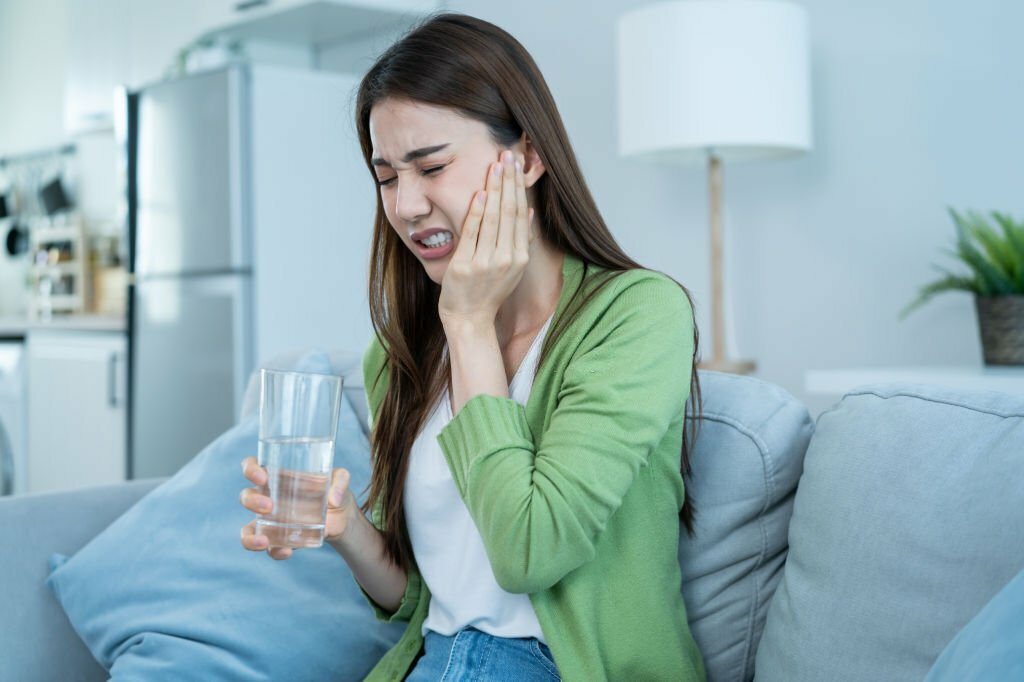Almost 47.2% of all adults aged 30 and above suffer from some sort of gum disease!
Gum diseases are common among individuals due to poor oral hygiene. Moreover, many individuals do not know what healthy or unhealthy gum looks like.
Keeping the same in mind, we’ve covered the following sections in the blog:
- What Does Healthy Gums Look Like?
- Healthy Gums Vs. Unhealthy Gums
- How To Spot Unhealthy Gums? What Is Gum Disease?
- How To Improve Gum Health: A DIY To Healthy Gums
- When To See A Dentist For Better Gums?
Let’s learn more about spotting and restoring gum health!
What Does Healthy Gums Look Like?
Regarding your oral health, things aren’t limited to how straight your teeth are or how bright you smile. When it comes to it, you can’t overlook the importance of your gum health too.
Gum health plays such a crucial role in your life for several reasons. Let’s understand more by looking at the perks of healthy gums in this section:
-
Improved Oral Health:
Healthy gums contribute to better oral health. Having healthy gums can prevent oral infections and reduce the risk of cavities and tooth decay.
-
Supporting General Well-being:
Gum disease has been related to various systemic health conditions, including respiratory infections, heart disease, diabetes, and poor pregnancy outcomes. You might minimize your risk of these problems by keeping your gums healthy.
-
Preventing Gum Disease:
Healthy gums are a barrier against gum disease, such as periodontitis and gingivitis. When deteriorated, such gum disease can also result in gum recession, gum inflammation, bleeding, and even tooth loss.
Therefore, even if you don’t have cavities and have the best pair of teeth in town, you’re not immune to gum disease. Most people are unaware of teeth and gum health since it’s mostly painless.
Healthy Gums Vs. Unhealthy Gums
A simple glare at the mirror can give you signs of healthy gums!
Healthy gums should be light pink and soft. There should be no gaps between your gums and teeth, nor should your gums bleed when you clean them.
Gum disease can cause them to seem swollen, irritated, and red. When you brush them, they may become painful or bleed. Bleeding is frequently one of the first symptoms of gingivitis, the most common form of gum disease.
Unhealthy gums could also result in receding your teeth. These spaces are known as periodontal pockets, and the severity of these gaps might reflect how far your gum disease has progressed.
How To Spot Unhealthy Gums? What Is Gum Disease?
Most individuals have no idea what does healthy gums look like!
Understanding diseased gums is your first step towards maintaining excellent dental health. Gum disease can cause tenderness, redness, and swelling. They may bleed when you brush or floss, and they may even retreat, making your teeth appear longer.
If you have persistent foul breath or loose teeth, it might indicate significant gum disease. Gum disease generally develops due to plaque accumulation. Once plaque accumulates beneath and along the gum line, it can cause infections that damage the gums and bones, resulting in gum disease and tooth decay.
Gingivitis, the first stage of gum disease, can also be caused by plaque. Your gums get inflamed as a result of gingivitis. You can also develop periodontitis, an advanced gum disease when left untreated.
This stage of gum infection impacts the bones holding your teeth. When left untreated for long, this can deteriorate gum protection and ruin bones and tissues connected to your teeth.
How To Improve Gum Health: A DIY To Healthy Gums
-
Have Regular Dental Cleanings
Regular dental cleanings and appointments should be your #1 priority to improve gum health. Make frequent dental appointments a priority. Your dentist has the instruments and knowledge to provide thorough cleanings that reach regions of your mouth that regular brushing and flossing cannot.
During these sessions, your dentist will remove plaque and tartar and identify and treat any developing dental concerns. Regular dental examinations also allow your dentist to inspect your gums for symptoms of illness or irritation. Based on the present status of your gums, recommendations for your at-home dental care regimen can be made.
-
Stop Smoking
While it is well established that smoking carries several risks to general health, it is less well understood that it also significantly impacts dental health. Tobacco use affects the immune system, making it difficult for your body to fight against gum diseases.
Smoking inhibits saliva production, which helps keep your teeth clean and reduces the impact of acid in your mouth. Once you stop smoking, you boost your body’s capacity to recover from gum infections, lower your risk of future gum disorders, and improve your gums’ general health.
-
Floss Your Mouth
Making flossing a non-negotiable component of your daily routine is a must in your list of how to get healthy gums. It assists in the removal of food leftovers and particles that your toothbrush cannot reach. This method successfully reduces the danger of damaging plaque formation and gum disease.
To floss properly, use a back-and-forth motion to slide the floss between your teeth softly. When you approach the gum line, curve it into a “C” shape and slip it into the space between your gums and the side of the tooth. As you proceed from tooth to tooth, remember to use new pieces of floss.
-
Brush Your Teeth After Every Meal
Brush your teeth after every meal to maintain the health of your gums. This practice efficiently reduces the time germs and plaque collect on your teeth and gums. Use a high-quality toothbrush, ideally battery-powered or electric, which can remove plaque more effectively than manual brushes.
The brushing technique is essential. Brush on your gums at a 45-degree angle. Brush all surfaces of the teeth – outer, inner, and chewing surfaces – lightly back and forth in short strokes. Brush your tongue regularly to eradicate germs and keep your breath fresh.
-
Choose Fluoride Toothpaste
Always choose fluoride-based toothpaste while shopping for toothpaste. Fluoride has been scientifically demonstrated to be beneficial in preventing cavities and strengthening tooth enamel. It protects your teeth and gums from decay by making the tooth more resistant to acid assaults from plaque, bacteria, and carbohydrates in the mouth.
Use a pea-sized quantity of fluoride toothpaste to brush all regions of your mouth for optimum effects. After brushing, rinse with water and consider using a fluoride mouthwash for further protection.
When To See A Dentist For Better Gums?
When it comes to teeth and gum health, you need to be vigilant. Visit your dentist when you experience pain or bleeding in your gums that lasts more than a week. Swollen or red gums that bleed regularly are gum disease symptoms.
Some other signs and symptoms of poor gum health include:
- Swollen, red gums.
- Gums that pull back from the teeth.
- Sensitive teeth.
- Gums that bleed easily.
- Teeth that feel loose in the mouth.
- Pain while chewing your food.
- Dentures that no longer fit correctly.
Takeaway
- Almost 47.2% of all adults aged 30 and above suffer from some sort of gum disease!
- Most individuals have no idea what healthy gums look like.
- A simple glare at the mirror can give you signs of healthy gums.
- Always choose fluoride-based toothpaste while shopping for toothpaste.


